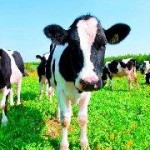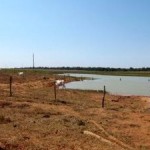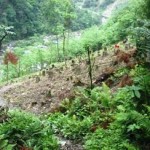
Gland, Switzerland – WWF and Lafarge, the world’s largest cement maker, on June 24 agreed to continue working together to further reduce the company’s greenhouse gas emissions and to help build hundreds of energy-efficient buildings – targets that will help fight the effects of climate change.
As part of its ongoing partnership with WWF, Lafarge committed to further reduce its net greenhouse gas emissions by 33 percent per ton of cement below 1990 levels by 2020. This will be achieved by increasing the use of alternative fuels (such as biomass) and the efficiency of Lafarge’s plants.
In an innovative approach to sustainability, the company also pledged to be part of the development of 500 sustainable buildings across the globe by 2015, and to advocate for ambitious national and global climate change policies.
As part of its commitment, Lafarge will work with its customers, architects, engineering companies, designers and construction companies to develop new innovative technology platforms and new construction systems, which will be used in the energy efficient buildings.
“Working with companies like Lafarge is an essential part of our efforts to address climate change,” said Bruce Haase, Acting Head Climate and Business Engagement, WWF International. “By working with the corporations with the highest carbon footprint, you can have a significant and measurable impact. Lafarge will help advance our work to move the world to a low carbon society.”
“The partnership and the new commitments will also enable us to reinforce our policy work,” Haase said. “One of the biggest policy challenges, we would like to engage Lafarge on, is moving greenhouse gas emissions reductions in the European Union from the current 20 percent target, to 30% by 2020.”

Lafarge and WWF have been working together for 10 years to reduce the company’s carbon footprint by improving its work practices and sustainability strategy. The company has been a member of WWF’s Climate Savers Programme since 2001 and has already exceeded previously set emissions reductions targets, leading to net emission reduction of 21.7% per ton of cement below 1990 levels in 2010.
“Lafarge is showing leadership by ensuring the targets cover all aspects of its work, from extraction to the construction of buildings, and including climate change policy”, Haase said. “In an industry that accounts for 6 percent of global greenhouse gas emissions, this will have a measurable impact.”
The two partners have been working together on a progressively wider array of issues, ranging from greenhouse gas emissions reduction and forest restoration, to biodiversity, sustainable construction, water footprint and persistent pollutants.

About WWF
WWF is one of the world’s largest and most respected independent conservation organizations, with over 5 million supporters and a global network active in over 100 countries. WWF’s mission is to stop the degradation of the earth’s natural environment and to build a future in which humans live in harmony with nature, by conserving the world’s biological diversity, ensuring that the use of renewable natural resources is sustainable, and promoting the reduction of pollution and wasteful consumption. For more information, visit wwf.panda.org.
Source: WWF.














